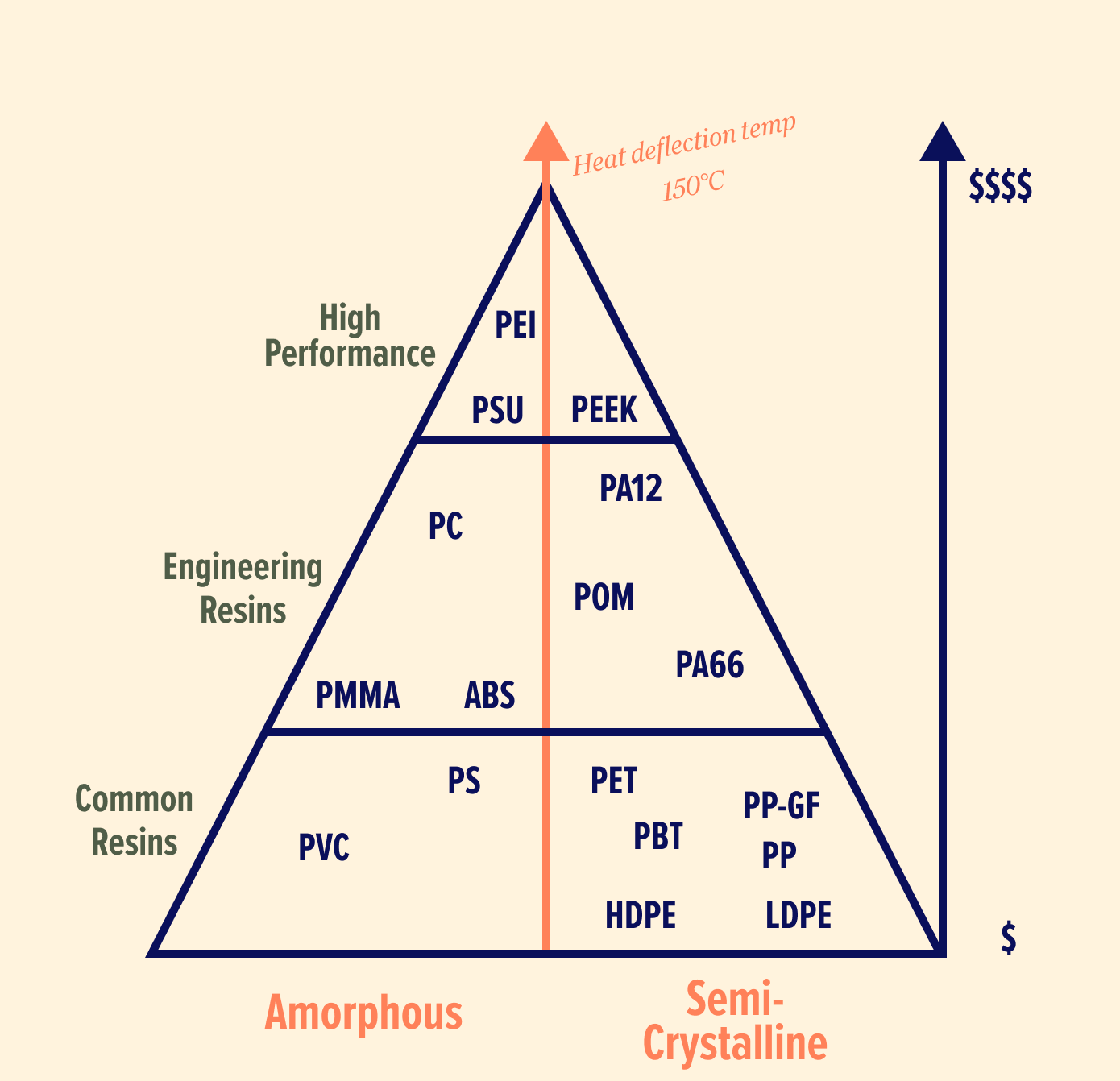In product design and engineering, material choice can make or break a project. While metals often dominate in strength and stiffness, plastics have their own powerful advantages. At Onit MFG, we help engineers understand the “why” behind the materials they use so they can make smarter, faster decisions and avoid costly mistakes.
Let’s explore what makes plastics different, and why that difference matters for manufacturing, particularly in injection molding.
Why Plastics Work: The Power of Low Melting Temperatures
The biggest advantage plastics bring to manufacturing? Their low melting point.
- Plastics melt at roughly 1/10th the temperature of metals.
- This allows for precise, cost-effective injection molding using steel tools with extremely fine details.
- Complex molds that would be prohibitively expensive for metal casting become practical with plastic.
Because of this, plastics are ideal for high-volume production, especially when fast cooling and detailed geometry are required.
Plastics vs. Metals: Key Mechanical Differences
When comparing metals and plastics, the contrast in mechanical properties is stark.
- Metals are ~1000x stiffer than most plastics. This makes them better for load-bearing parts.
- Plastics deform more easily, especially under long-term or high-temperature loads.
- Plastic components must be engineered with temperature sensitivity in mind. What holds at room temp may fail at 50°C.
Thermal Conductivity: Plastics Cool Slowly, But Precisely
Plastic has low thermal conductivity. That means:
- It takes longer for plastic parts to cool down.
- But that same trait enables precise control over flow paths in mold cavities.
- This makes thin-walled, highly detailed parts achievable in ways that metals often can't match.
So while cooling takes longer, plastic’s insulating properties give you design freedom that metals can’t replicate.
Cost Myths: Plastics Aren’t Always Cheaper
It’s tempting to assume plastics are a budget option. But that’s not always true:
- High-performance plastics (used in automotive or aerospace) can exceed $10/kg, rivaling or surpassing metal costs.
- When priced per volume ($/dm³), plastics are often more expensive than metals.
The bottom line: Choose plastic for its design advantages, not just price.

Temperature Matters
Every plastic has a glass transition temperature (Tg)—the point where it goes from rigid to soft.
- Below Tg → brittle and stiff
- Between Tg and melting → soft and formable
- Above melting → flows like a liquid (for semi-crystalline types)
For example, semi-crystalline plastics like PA66 or POM can deform substantially before failure when in the glass transition range. This makes them ideal for load-bearing applications as long as temperatures are controlled.
Onit’s Take: Plastics Aren’t Just Substitutes. They’re Solutions.
Plastics aren’t here to replace metal—they’re here to unlock design possibilities that metal never could. When used correctly, they offer lightweight strength, design flexibility, and scalable cost advantages.
But they need to be selected wisely. That’s where Onit MFG comes in.
We help product engineers and procurement leads pick the right resin for long term success and ensure design manufacturabilty from day one.
Have a part in mind? Let’s talk materials.
Upload your files or reach out to an engineer today.
Don’t wait pal, start moving the needle in your business today with our broad-ranging solutions built around your specific business needs.
Get Started.jpg)



